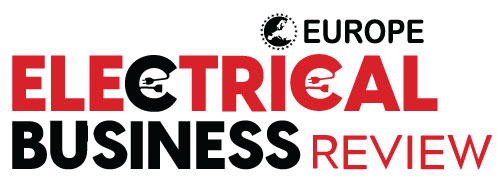Thank you for Subscribing to Electrical Business Review Weekly Brief
I agree We use cookies on this website to enhance your user experience. By clicking any link on this page you are giving your consent for us to set cookies. More info
Understanding the Role of Electrical Enclosures
Electrical enclosures safeguard equipment in industries like automation, renewables, and healthcare, ensuring safety, reliability, and compliance with industry standards.

By
Electrical Business Review | Wednesday, March 12, 2025
Stay ahead of the industry with exclusive feature stories on the top companies, expert insights and the latest news delivered straight to your inbox. Subscribe today.
Electrical enclosures safeguard equipment in industries like automation, renewables, and healthcare, ensuring safety, reliability, and compliance with industry standards.
FREMONT, CA: Electrical enclosures provide safety, dependability, and lifespan by shielding electrical components from various environmental influences. These enclosures are used in multiple fields and applications, each having unique needs and valuable applications. Electrical enclosures are used in industrial automation to hold sensitive equipment such as motor drives, PLCs (Programmable Logic Controllers), and control panels. These enclosures shield electronics from physical harm, dust, and moisture typical in manufacturing environments. Additionally, they guarantee worker safety by offering a safe wiring environment and avoiding unintentional contact with active components.
Electrical enclosures for outdoor use are constructed with weatherproof materials such as stainless steel or fiberglass. These enclosures protect electrical equipment from rain, snow, UV radiation, and extreme temperatures. Common outdoor applications include telecommunications infrastructure, traffic signal controls, and lighting systems. Electrical enclosures safeguard control systems, sensors, and monitoring equipment in water and wastewater treatment facilities. These enclosures are often corrosion-resistant to withstand the treatment process's moisture, chemicals, and gas exposure. They help maintain operational efficiency and prevent downtime due to equipment failure.
Electrical enclosures are integral to renewable energy systems such as solar farms and wind turbines. They house inverters, controllers, and monitoring devices essential for converting and managing power generated from renewable sources. Enclosures for these applications are designed to withstand outdoor conditions while ensuring uninterrupted energy production. Electrical enclosures in commercial buildings serve various purposes, from housing electrical distribution panels to controlling HVAC (Heating, Ventilation, and Air Conditioning) systems. These enclosures organize wiring, protect sensitive equipment from damage, and comply with building codes for safety and accessibility.
Using electrical enclosures, data centers house servers, networking equipment, and power distribution units are growing. Enclosures in data centers are designed for efficient cable management, thermal management, and scalability to accommodate evolving technology requirements. They provide a controlled environment to ensure the reliable operation of critical IT infrastructure. In the oil and gas sector, electrical enclosures are deployed in harsh environments such as offshore platforms, refineries, and drilling sites. These enclosures protect electrical components from exposure to corrosive chemicals, explosive gases, and saltwater spray. They adhere to industry standards for hazardous location classifications to mitigate the risk of ignition.
Electrical enclosures are essential for transportation infrastructure applications, including railway signaling systems, traffic management, and roadside cabinets for telecommunications equipment. Enclosures installed in these environments must withstand vibration, electromagnetic interference, and temperature fluctuations while ensuring uninterrupted operation. Electrical enclosures play a crucial role in healthcare facilities by housing power distribution panels, medical equipment, and building automation systems. Enclosures in healthcare settings comply with stringent safety regulations and infection control protocols. They protect against electrical hazards and ensure the reliable performance of critical healthcare infrastructure.
Electrical enclosures find applications in agricultural operations for controlling irrigation systems, greenhouse climate control, and livestock management. These enclosures protect electronics from dust, moisture, and animal-related damage while improving operational efficiency and yield. Electrical enclosures serve diverse practical use cases across industries, providing protection, organization, and reliability for electrical equipment and systems. Whether in industrial settings, commercial buildings, or outdoor environments, properly selecting and installing electrical enclosures are essential to ensure the safety, efficiency, and longevity of electrical infrastructure.








